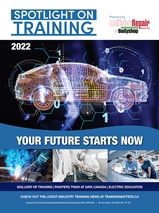CO2 reduction by up to 3.1% is expected by regenerative electric power via exhaust gas heat through Thermoelectric Generator unit on a vehicle with 2.0L gasoline engine
HAMAMATSU, Japan–(BUSINESS WIRE)–Yamaha Corporation and Sumitomo Corporation Power & Mobility Co., Ltd., a Sumitomo Corporation Group company (hereafter referred to as “both companies” or “we”), have jointly demonstrated a new waste heat recovery system based on thermoelectric generator (hereafter referred to as “TEG”) technology, which generates electrical power via exhaust gas heat and was proved to reduce CO2 emissions during vehicle testing on a chassis dynamometer (hereafter referred to as “this demonstration test”).
TEG unit, which is installed in a part of vehicle exhaust system, can reduce CO2 emissions following the reduction of alternator load achieved by generating electrical power from unutilized waste exhaust gas and also by early warm-up of engine by heated coolant through TEG unit at engine start.
In this demonstration test TEG unit was installed in a test vehicle, and the generated electrical power from TEG unit and CO2 emissions were measured on a chassis dynamometer. Thanks to the TEG unit, 1.9% of CO2 emissions (i.e. 3.9 g/km) was reduced throughout the European WLTP*1 driving cycle. Following this result, the potential benefit of TEG unit was estimated to be 3.1% CO2 reduction (i.e. 6.4g/km) by further optimization of vehicle installation of TEG unit.
Background of the Development
Recently the activities to realize a carbon neutral society have been accelerated globally and further CO2 reduction has been requested strongly to automotive industry.
TEG has long been drawing attention as one of the environmental technologies, and in the automotive industry various development efforts have been made to materialize the technology to reduce CO2 emissions. However, due to the insufficient performance and reliability of the TEG module, and also lack of engineering work to design the system using TEG unit on a vehicle, the technology has yet to be put into practical use.
In March 2021, both companies commenced sample sales of a TEG module, YGPX024*2, that features the highest output and largest size*3, to investigate market needs. We have now conducted this demonstration test for automotive applications where business on a large market scale can be expected.
Outline of the Demonstration Test
This demonstration test was outsourced to FEV Europe GmbH (Headquarters: Aachen, Germany). A system composed of TEG unit and DC/DC converter was installed in a test vehicle and this demonstration test was conducted on a chassis dynamometer. The details of the demonstration test are as follows.
-
Test Vehicle
Jaguar F-PACE (2.0L turbo-charged petrol engine, SUV) -
Configuration of TEG unit
TEG unit consists of four YGPX024 TEG modules, two heat exchangers for exhaust gas and three heat exchangers for water cooling circuit stacked together. With a proprietary structure and manufacturing method, YGPX024 has the largest output in the world and offers reliability suitable for automotive applications*3. -
Schematic of TEG unit installation in a vehicle
TEG unit was installed in the exhaust pipe at the downstream of the catalyst. The main engine cooling circuit was branched and extended to TEG unit. The existing water pump on the vehicle was used to supply coolant to TEG unit. In parallel with the existing alternator the TEG unit was connected directly to an existing 12V battery via a DC-DC convertor with maximum power point tracking function, which enabled the unit to operate at its optimum and efficiently obtain electrical power. No external equipment was used for this test, due to the importance of evaluating the actual benefit for the vehicle. -
Evaluation Method
This demonstration test was done based on different test cycles such as European WLTP driving cycle (incl. Phase 4), US06*4 driving cycle and steady state driving cycle. During the tests on a chassis dynamometer, CO2 emissions and the electrical output generated from TEG unit were measured to evaluate the effect of TEG unit.
Test Result
CO2 reduction and electrical output from TEG unit are summarized as follows.
-
European WLTP driving cycle
CO2 reduction: 1.9% (3.9 g/km); Max. electrical output: 165 W -
US06 driving mode
average electrical output: 97 W -
Steady state driving cycle at 2,000 rpm (for extended-range electric vehicle and series-hybrid vehicle)
electrical output: 195 W, equivalent to 40% of alternator generated power
During this demonstration test, there were notable installation restrictions for the TEG unit, and the gas temperature at the exhaust inlet pipe could not reach the target value. Therefore, we conducted an additional test achieving the target gas temperature, and based on the test result, our analysis showed a maximum CO2 emissions reduction of 3.1% (6.4 g/km) by optimizing the vehicle installation of TEG unit.
Future Prospects
It is certain that electrification and higher efficiency of internal combustion engines are essential in automotive industry to realize a carbon neutral society. Most automotive manufacturers require novel technologies for further improvements in CO2 reduction of vehicles with an internal combustion engine. Our goal is to realize a carbon neutral society with our customers through the world’s first practical use of TEG unit for automotive applications.
|
*1. |
Worldwide harmonized Light duty driving Test Procedure: International standards on exhaust gas emission test cycles and test methods for passenger and light commercial vehicles |
|
*2. |
For details of the TEG module, please access the following URL. |
|
|
https://device.yamaha.com/en/thermoelectric_cooler/generator/ |
|
*3. |
Based on investigations conducted by both companies in 2022 |
|
*4. |
One of the exhaust gas emission and fuel-efficiency test methods introduced in North America used to measure exhaust gas at high speed and high acceleration |
-
Introduction to Sumitomo Corporation Power & Mobility Co., Ltd.
Sumitomo Corporation Power & Mobility Co., Ltd. is developing a wide variety of businesses around the world related to “building next-generation mobility systems and social infrastructure” by utilizing the abundant experience and know-how of the Sumitomo Corporation Group and its international network. Major businesses include the (1) trade of automobiles and rail vehicles, and power generation facility equipment (export and import, and trilateral trade), (2) development and execution of overseas power plant projects and transportation projects, and (3) development of new business in the mobility field.
For details, please access: https://www.sc-pmco.com/en/
* All product names and company names are the trademarks or registered trademarks of their respective owners.
* All information is as of the date of release. Information is subject to change after its release.
Contacts
For media inquiries:
Yamaha Corporation Media Relations Group Corporate Communications Division, Ayumu Sato
Contact Form: https://inquiry.yamaha.com/contact/?act=55&lcl=en_WW
Tel: +81-53-460-2210 (Japanese Correspondence only)
Web: www.yamaha.com
For General Inquiries:
Yamaha Corporation Electric Devices Division
https://device.yamaha.com/en/thermoelectric_cooler/contacts




















